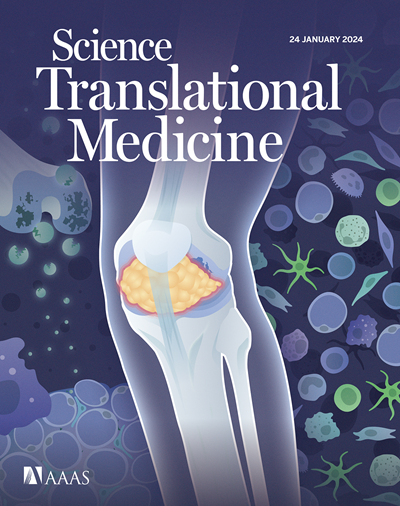微卫星稳定型结直肠癌DNA突变率的异质性和进化
IF 15.8
1区 医学
Q1 CELL BIOLOGY
引用次数: 0
摘要
历史上,DNA序列易变性在染色体不稳定性(CIN)的肿瘤中被认为是相对统一和低的,这是基于高易变性在核型异常情况下是有害的假设。最近的计算机分析挑战了这一观点,表明CIN肿瘤的突变率存在一些异质性;然而,这些预测缺乏实验验证。目前还不清楚突变率的肿瘤间变异性如何与肿瘤内多样化和疾病进展相比较,突变率是否在CIN癌症中具有功能相关性,以及哪些突变过程在CIN肿瘤发生和进化过程中形成突变累积。为了解决这些空白,我们使用来自7种CIN、微卫星稳定型结直肠癌(CRC)和1种微卫星不稳定型结直肠癌的患者来源的类肿瘤克隆群体进行了突变积累实验。每个肿瘤都表现出不同的突变率足迹,这在来自同一祖先的不同克隆中是保守的。相比之下,不同肿瘤的突变率存在显著差异,微卫星稳定肿瘤的突变率差异与微卫星不稳定肿瘤的突变率差异同样显著。新的突变反映了与有缺陷的DNA复制和修复相关的突变过程,这在正常组织中未被检测到。最后,突变积累试验和亚克隆变异的高深度全外显子组测序均显示,与匹配的原发肿瘤相比,转移性病变中的突变率更高,这表明在癌症传播过程中,突变性增加的细胞被积极选择。通过提供人类癌症突变率的经验评估,我们的数据描绘了DNA突变不稳定性的异质性、遗传性和进展相关的可进化性,作为微卫星稳定CRC的标志。本文章由计算机程序翻译,如有差异,请以英文原文为准。
Heterogeneity and evolution of DNA mutation rates in microsatellite stable colorectal cancer
Historically, DNA sequence mutability has been considered relatively uniform and low in tumors with chromosomal instability (CIN), based on the assumption that high mutability would be detrimental in karyotypically aberrant contexts. Recent in silico analyses have challenged this view, suggesting some heterogeneity in mutation rates across CIN tumors; however, these predictions lack experimental validation. It also remains unclear how the intertumor variability of mutation rates compares to intratumor diversification and evolves along disease progression, whether mutation rates are functionally relevant in CIN cancers, and which mutational processes shape mutational accrual during CIN tumor onset and evolution. To address these gaps, we performed mutation accumulation experiments using clonal populations of patient-derived tumoroids from seven CIN, microsatellite-stable colorectal cancers (CRCs), and one microsatellite-unstable CRC. Each tumor exhibited a distinctive mutation rate footprint that was conserved among different clones from the same ancestor. In contrast, mutation rates diverged markedly across different tumors, with variations in magnitude within microsatellite-stable tumors as prominent as those distinguishing them from microsatellite-unstable tumors. New mutations reflected mutational processes associated with defective DNA replication and repair, which were not detected in normal tissues. Last, both mutation accumulation assays and high-depth whole-exome sequencing of subclonal variants showed higher mutation rates in metastatic lesions compared with matched primary tumors, suggesting positive selection for cells with increasing mutability during cancer dissemination. By providing an empirical assessment of mutation rates in human cancer, our data delineate heterogeneity, heritability, and progression-associated evolvability of DNA mutational instability as hallmarks of microsatellite-stable CRC.
求助全文
通过发布文献求助,成功后即可免费获取论文全文。
去求助
来源期刊

Science Translational Medicine
CELL BIOLOGY-MEDICINE, RESEARCH & EXPERIMENTAL
CiteScore
26.70
自引率
1.20%
发文量
309
审稿时长
1.7 months
期刊介绍:
Science Translational Medicine is an online journal that focuses on publishing research at the intersection of science, engineering, and medicine. The goal of the journal is to promote human health by providing a platform for researchers from various disciplines to communicate their latest advancements in biomedical, translational, and clinical research.
The journal aims to address the slow translation of scientific knowledge into effective treatments and health measures. It publishes articles that fill the knowledge gaps between preclinical research and medical applications, with a focus on accelerating the translation of knowledge into new ways of preventing, diagnosing, and treating human diseases.
The scope of Science Translational Medicine includes various areas such as cardiovascular disease, immunology/vaccines, metabolism/diabetes/obesity, neuroscience/neurology/psychiatry, cancer, infectious diseases, policy, behavior, bioengineering, chemical genomics/drug discovery, imaging, applied physical sciences, medical nanotechnology, drug delivery, biomarkers, gene therapy/regenerative medicine, toxicology and pharmacokinetics, data mining, cell culture, animal and human studies, medical informatics, and other interdisciplinary approaches to medicine.
The target audience of the journal includes researchers and management in academia, government, and the biotechnology and pharmaceutical industries. It is also relevant to physician scientists, regulators, policy makers, investors, business developers, and funding agencies.
 求助内容:
求助内容: 应助结果提醒方式:
应助结果提醒方式:


